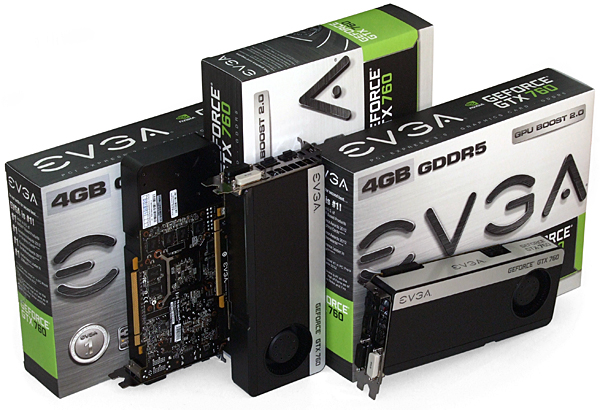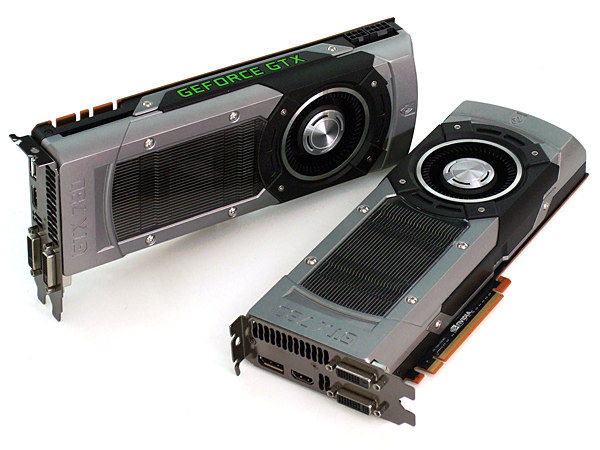SLI Scaling: Can Three GeForce GTX 760s Beat Two 780s?
Back when GeForce GTX 780 sold for $650, slinging a bunch of 760s together looked like a great deal. Now that the 780's down to $500, is there still value in going three-way SLI with GK104, or are you better served by a couple of GK110-based 780 cards?
GeForce GTX 780 And 760: Two Of One, Three Of The Other
Is it ever possible to get more performance and save money at the same time? Not long ago, we could easily buy three GeForce GTX 760 graphics cards for less money than a pair of 780s. And so we did. Though financial considerations were a large part of our decision, Nvidia's ability to minimize micro-stuttering through effective pacing was what gave me my original impetus. At some of the resolutions we test and in some of our game benchmarks, AMD still doesn't facilitate frame pacing in its driver.
More recently, though, AMD threw a wrench into the value aspect of our story. Pricing pressure from the Radeon R9 290X and 290 forced Nvidia to cut the GeForce GTX 780 down $150. Enthusiasts consequently watched competition tighten up as the GeForce GTX 770 dropped and a new flagship GeForce GTX 780 Ti was announced. Unfortunately for us, the company's 4 GB GeForce GTX 760 remains a $300 card.
At one time we were looking for more performance-per-dollar from three GeForce GTX 760s in SLI. Today, we’re only hoping that they're faster overall.
Performance becomes even more critical when we consider what we’re giving up. Those stock GeForce GTX 780s feature Nvidia's big aluminum cooler that generates less noise under load than a GeForce GTX 760 with its plastic shroud. Whether we compare two 760s to one 780 or three 760s to a pair of 780s, we’re always looking at one more moderately noisy GeForce GTX 760 to beat the performance of two GK110 GPUs.
Though a GeForce GTX 780 price drop appears to be Nvidia’s first response to AMD’s Radeon R9 290X, the firm wasn't standing still waiting for its competition to trump it. A quick look at the price of its newer GeForce GTX 780 Ti shows why the previous top gaming card is still a great basis for today’s comparison.
| Nvidia GeForce 700-Series Specs | |||
|---|---|---|---|
| Row 0 - Cell 0 | Nvidia GeForce GTX 780 Ti | Nvidia GeForce GTX 780 | Nvidia GeForce GTX 760 |
| Shaders | 2880 | 2304 | 1152 |
| Texture Units | 240 | 192 | 96 |
| Full Color ROPs | 48 | 48 | 32 |
| Graphics Clock MHz (Boost) | 875 (928) | 863 (900) | 980 (1033) |
| Texture Fillrate | 210 Gtex/s | 166 Gtex/s | 94.1 Gtex/s |
| Memory Clock | 1750 MHz | 1502 MHz | 1502 MHz |
| Memory Bus | 384-bit | 384-bit | 256-bit |
| Memory Bandwidth | 336 GB/s | 288 GB/s | 192 GB/s |
| Graphics RAM | 3 GB GDDR5 | 3 GB GDDR5 | 4 GB GDDR5 |
| Die Size | 551 mm² | 551 mm² | 294 mm² |
| Transistors (Billion) | 7.1 | 7.1 | 3.54 |
| Process Technology | 28 nm | 28 nm | 28 nm |
| Power Connectors | 6-pin+8-pin | 6-pin+8-pin | 2 x 6-pin |
| Maximum Power | 250 W | 250 W | 170 W |
| Price | $700 | $500 | $300 |
If we stepped up to a pair of GeForce GTX 780 Ti cards, we also would have needed to use 760s in four-way SLI instead. Typically, that fourth card doesn't scale very well in games. Then again, estimates based on historic trends aren’t infallible, and any card maker confident that they can break the pattern is welcome to send hardware for a rematch. We do have the 780 Tis in the lab, ready to go.
Get Tom's Hardware's best news and in-depth reviews, straight to your inbox.
Current page: GeForce GTX 780 And 760: Two Of One, Three Of The Other
Next Page Test System And Benchmarks-
Zac Lloyd-Jones Very interesting article. Would have been great to have the GTX 770 SLI'd in there for comparison :).Reply -
rolli59 Agree with the conclusion totally since after the price drop on the GTX780 I stopped recommending dual GTX760 over the GTX780.Reply -
Amdlova 770 is the 680 with more hz... 760 is a new nvidia product is a 660ti with more muscle. 760 = 670 in powerReply -
iam2thecrowe there are some major fps drops in the sli configurations on bf3, wonder why? did that happen on the single monitor solution? and in other games? crap like that is why i switched my sli config out for a better single card.Reply -
Crashman Reply
I checked and found 1 stuck frame on the GTX 780 SLI at 1920x1080. It lasted far less than a second and dropped FPS from 200 (capped) to 54.12245834 said:there are some major fps drops in the sli configurations on bf3, wonder why? did that happen on the single monitor solution? and in other games? crap like that is why i switched my sli config out for a better single card.
Yes, but the problem is that it's hard to find six cards laying around (three of each), and we quit buying 2GB cards for 3-way SLI a couple years back when they started running out of memory at 2560x1600. It got worse in Surround mode.12245939 said:would've been interesting to see the 2GB cards in SLI also
-
bystander I noticed in Tomb Raider that 780 SLI was broken, yet 760 SLI worked well. 780 SLI had worse scores than a single 780 using Surround setups, yet the 760 SLI worked with surround setups quite well. I wonder what is up with that.Reply -
iam2thecrowe Reply12246217 said:I noticed in Tomb Raider that 780 SLI was broken, yet 760 SLI worked well. 780 SLI had worse scores than a single 780 using Surround setups, yet the 760 SLI worked with surround setups quite well. I wonder what is up with that.
weird sh!t sometimes happens with multi-card setups. i have owned both crossfire and sli in the last couple years, and now i'm dead set on single card is the only way to go, only takes one game not to work properly to ruin your day. Multi card for me, is only for when the best card available isn't powerful enough for you, or maybe second best card as the best is often overpriced ridiculously. -
giovanni86 Waiting for Maxwell. Prices on both sides need to come down. Best for single GPU's was $500 with dual gpu's being double the price, i miss old prices.Reply -
Au_equus How about 2x 760 v 780 ti and 3x 780 v 2x 780 ti?Reply
http://www.ocaholic.ch/modules/smartsection/item.php?page=0&itemid=1172


